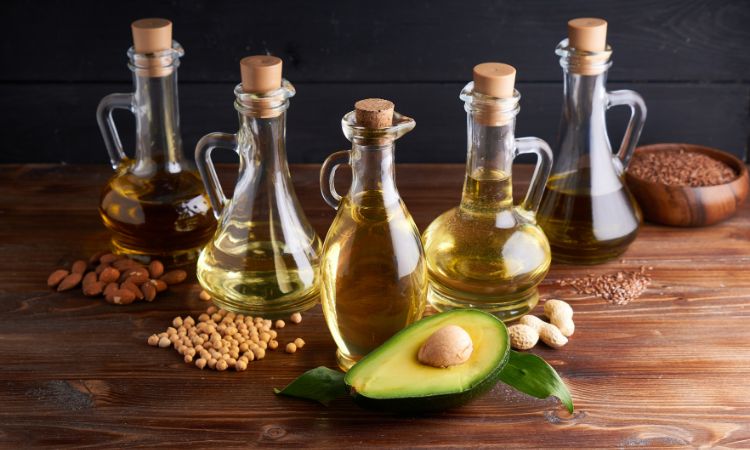
The Latin America vegetable oil market size is a dynamic and evolving sector of the agricultural industry, primarily driven by the region’s vast arable land and favorable climatic conditions. In 2023, the market attained a significant volume of 22.45 million metric tons (MMT). Looking ahead, the market is projected to grow at a compound annual growth rate (CAGR) of 1.45%, expecting to reach a volume of 25.62 MMT by the end of 2032. This growth trajectory underscores the increasing importance of vegetable oils in the food industry, biofuel production, and other industrial applications across Latin America.
Key Benefits
- Economic Growth: The vegetable oil sector is a pivotal component of Latin America’s agricultural exports, contributing significantly to regional economies.
- Health Benefits: Vegetable oils are a key source of essential fatty acids and vitamins, making them integral to a balanced diet.
- Sustainability: Many producers in the region are increasingly adopting sustainable and eco-friendly farming practices, enhancing biodiversity and reducing environmental impact.
Key Industry Developments
Recent developments have shaped the landscape of the vegetable oil market in Latin America:
- Expansion of Production Capacities: Major companies have expanded their processing facilities to meet growing domestic and international demand.
- Innovations in Product Offerings: Enhanced product differentiation, such as the introduction of organic and non-GMO oils, caters to a more health-conscious consumer base.
Driving Factors
Several factors are propelling the growth of the vegetable oil market in Latin America:
- Increased Consumption: Growing population and urbanization have led to higher demand for cooking oil and processed foods.
- Biofuel Demand: The push towards renewable energy sources has spiked the demand for bio-based fuels, where vegetable oil plays a crucial role.
- Export Opportunities: Latin America’s strategic geographic position enables it to serve as a key exporter to North America and Europe.
COVID-19 Impact
The pandemic has had a mixed impact on the vegetable oil market:
- Supply Chain Disruptions: Initial lockdowns disrupted the supply chains, impacting production and distribution.
- Resilience in Demand: Despite challenges, the demand for vegetable oil remained relatively stable, supported by its essential role in food production.
Restraining Factors
However, several challenges hinder market growth:
- Price Volatility: Fluctuations in global commodity prices can affect profitability for producers.
- Environmental Concerns: Deforestation and land use changes associated with expanding agricultural lands pose sustainability concerns.
Market Segmentation
The market is segmented based on type, application, and geography:
- By Type: Soybean oil, palm oil, canola oil, sunflower oil, and others.
- By Application: Food industry, biofuels, cosmetics, and pharmaceuticals.
- By Geography: Brazil, Argentina, Mexico, and others.
Market Outlook
The outlook for the Latin America vegetable oil market is optimistic, with steady growth expected through 2032. Technological advancements in oil extraction and processing are likely to enhance production efficiency and product quality.
Trends
- Health-Oriented Products: There is a growing trend towards healthier, low-cholesterol vegetable oils.
- Sustainable Practices: Increasing adoption of sustainable agriculture practices among oil producers.
Industry Segmentation
The industry is broadly segmented into cultivation, extraction, refining, and distribution stages, each playing a crucial role in the market’s ecosystem.
Regional Analysis/Insights
- Brazil: Leads the region in production and consumption, driven by its vast agricultural lands and developed infrastructure.
- Argentina: A significant player in the soybean oil segment, known for its high-quality exports.
- Mexico: Rapidly growing in the food processing sector, boosting demand for various types of vegetable oils.
News
Recent news highlights investments in new extraction plants and partnerships aimed at enhancing sustainable practices within the industry.
Top Impacting Factors
- Economic Policies: Trade agreements and tariffs can significantly impact market dynamics.
- Technological Advancements: Innovations in farming and oil processing technology are crucial for maintaining competitiveness.
Target Audience
- Food Processors
- Biofuel Companies
- Health and Wellness Sector
- Agricultural Investors
Major Key Players
Key players in the Latin America vegetable oil market include:
- Archer Daniels Midland Company
- Bunge Limited
- Cargill Incorporated
- Louis Dreyfus Company B.V
- Aceitera General Deheza S.A
- Agropalma S/A
- Camilo Ferrón Chile S.A.
Opportunities
- Product Diversification: There is a substantial opportunity for the development of specialty oils catering to niche markets.
- Expansion into New Markets: Increasing global demand provides opportunities for regional producers to expand their market reach.
Challenges
- Regulatory Compliance: Adhering to evolving environmental and health regulations is a continuous challenge.
- Competition from Synthetic Alternatives: The rise of synthetic substitutes poses a threat to natural vegetable oils.
Scope
The scope of the market extends from agricultural production to end-user applications in various industries, encapsulating the complete value chain.